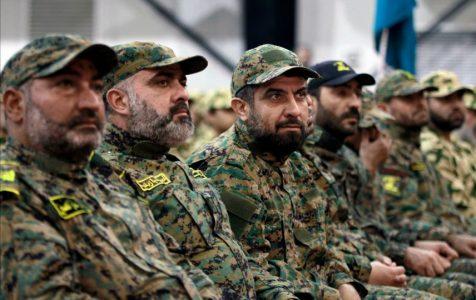
Hezbollah likely to replace ISIS terrorist group north of Israel
The Syrian army is expected to complete its takeover of the country’s southwest, near the border with Israel, in the coming days, according to the IDF. This will allegedly restore a familiar situation, in which Syria’s regime is once again stable, even if under the auspices of Russia.
On it’s face, this would seem to be an ideal situation — especially if reality on the ground reverts to the one that existed before the war began in 2011, when Syria and Israel both adhered to the 1974 cease-fire agreement in full. This would restore peace and quiet to the Golan Heights, which could once again become Israel’s most tranquil frontier.
The key word here is “if.” Unfortunately, the chances of this becoming reality are slim. The Syrian army may regain control on the ground, but it will not be the only armed presence near the border. Russia will be there, too, and its presence is both a blessing and a curse.
The Russian presence — ostensibly meant to inspire restraint on all sides — will only be effective if Russia agrees to act on Israeli intelligence and thwart anti-Israeli incidents. But if the Russians prove to be a modern version of the United Nations Interim Force in Lebanon — which sees no evil, hears no evil, and speaks no evil — then Israel will find itself in a terrible predicament, as its presence will make it difficult for Israel to act independently.
Russia, however, is the easy part. The bigger problems are Iran and its proxy, Hezbollah.
Iranian forces are unlikely to be able to reach the Syria-Israel border, because Israel, Russia, and even Syria — which would prefer not to be dragged into a conflict with Israel — will work to prevent that from happening.
Israel insists on the complete removal of Iranian forces from Syria, which is unlikely to happen. The last Russian offer on that issue was to keep Iran 100 kilometers (62 miles) from the border. This can be used as a starting point for negotiations, but those will be exhausted sooner rather than later.
Hezbollah is a different story. The Iranian-backed Shiite terrorist group is already in Syria. Its operatives are fighting alongside the Syrian army, and it has several hundred local villagers on its payroll. This was a strategic decision by Hezbollah leader Hassan Nasrallah, who wants to turn the Golan border into an active war zone with Israel.
Hezbollah is likely to employ its familiar methods: joining local militias, importing its tactical abilities — anti-tank missiles, explosives, and snipers — from Lebanon, and importing ground troops.
The first stage has already been completed, the second stage is in full swing, and — unless Hezbollah is stopped — the third stage will become a reality in a few short years.
Stopping Hezbollah in its tracks is Israel’s main challenge, and doing so will become exponentially more difficult once the Syrian civil war officially ends. Until now, Israel has been able to use the chaos north of the border to eliminate any risk from that direction, but once the war ends, any Israeli use of force would have to be justified to other parties.
Legitimizing Israeli operations on this front is likely to become far more complex, and the risk for a security escalation will be greater. This will require Israel to use more carrots and sticks opposite everyone involved, as well as adamantly enforce its red lines.
Israel will also soon end the humanitarian-aid campaign that it has been carrying out on the border. The IDF hopes that the United Nations Disengagement Observer Force stationed in the buffer zone between Israel and Syria will be able to resume its operations in full, both lending a hand to the local Syrian population, and providing them with an incentive not to back the anti-Israeli elements in the area. But the situation for Israel looks to be extremely perilous.
Source: Algemeiner





